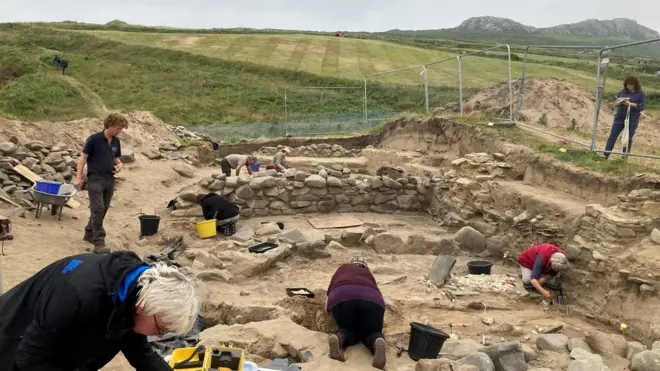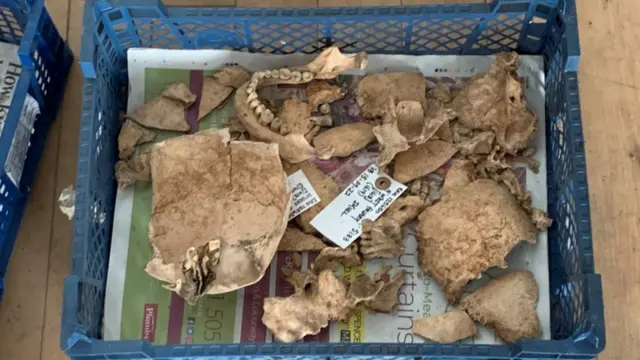An incredible archaeological discovery beneath the former Ocky White department store in Haverfordwest, Pembrokeshire, has provided a rare and invaluable glimpse into the medieval past of the region. The excavation site, thought to be the remains of St Saviour’s Priory, dates back to around 1256 and was once part of a Dominican monastery complex. This extraordinary find reveals not just the structure of the priory but also the lives of the individuals who lived and were buried there, offering a wealth of insights into medieval society.

A Hidden Medieval Sanctuary
The priory was an important religious center for the area, housing dormitories, scriptoriums (rooms where manuscripts were written), stables, and even a hospital. As part of a Dominican order, it was likely a place of religious study and care for the poor and sick. The presence of a hospital is particularly significant as it speaks to the priory’s role in community service, a feature common to many medieval religious institutions.

Excavations beneath the store have uncovered the remains of over 240 individuals, including more than 100 children. Many of these individuals were buried with apparent reverence, indicative of the importance of burial practices in the medieval period. Some remains show signs of battle-related injuries, offering a stark reminder of the harsh realities of life during this era. This discovery adds a new dimension to our understanding of medieval society, providing a tangible connection to the everyday struggles and traumas of the time.
The Social Composition of the Priory’s Inhabitants
The range of individuals found in the burial site is especially noteworthy. The burials span across different social strata, from wealthy individuals to common townsfolk. This diversity in burial practices provides a unique opportunity to study the health, social structure, and lifestyles of those who lived in medieval Haverfordwest. Wealthier individuals were likely buried with more elaborate markers or better-preserved remains, while the poorer members of the community were likely buried in simpler, unmarked graves.

The burial of over 100 children is particularly striking, highlighting the difficult living conditions of the time, where infant mortality rates were often high due to disease, malnutrition, or poor medical care. The presence of battle injuries in some of the remains adds another layer of intrigue, hinting at the political and social turbulence that may have affected the community.
Long-lasting Legacy: A Window into Pembrokeshire’s Medieval Past
This discovery also sheds light on the long duration of use of the priory’s cemetery, with evidence suggesting that it could have been in use up until the early 18th century. This extended timeline enriches our understanding of how the region’s religious and social landscape evolved over several centuries. The priory’s impact on the local community may have extended far beyond its original construction, influencing not only religious practices but also the cultural and economic development of Pembrokeshire.

The skeletal remains offer invaluable insights into the health, lifestyle, and daily struggles of those who lived at the time. By analyzing the bones, archaeologists can learn about the diseases, injuries, and conditions that affected the population. These remains help to reconstruct the broader social, cultural, and religious dynamics of the medieval period in Pembrokeshire, providing us with a deeper understanding of the region’s history.
Conclusion: Unlocking the Past
In conclusion, the excavation beneath the Ocky White department store has unearthed a wealth of information about medieval Haverfordwest, offering a vivid picture of life, death, and devotion in the 13th century. Through the discovery of St Saviour’s Priory and the remarkable burial site, we gain a better understanding of the social, religious, and cultural landscape of medieval Pembrokeshire. This excavation continues to captivate archaeologists and historians alike, as each new find offers an important piece to the puzzle of the region’s rich and varied past.
This rare find not only adds to our knowledge of the medieval world but also underscores the value of archaeological research in uncovering the stories of past communities. The revelations about the priory, the people who lived there, and their role in shaping the history of Pembrokeshire make this discovery a truly extraordinary contribution to the field of archaeology.

